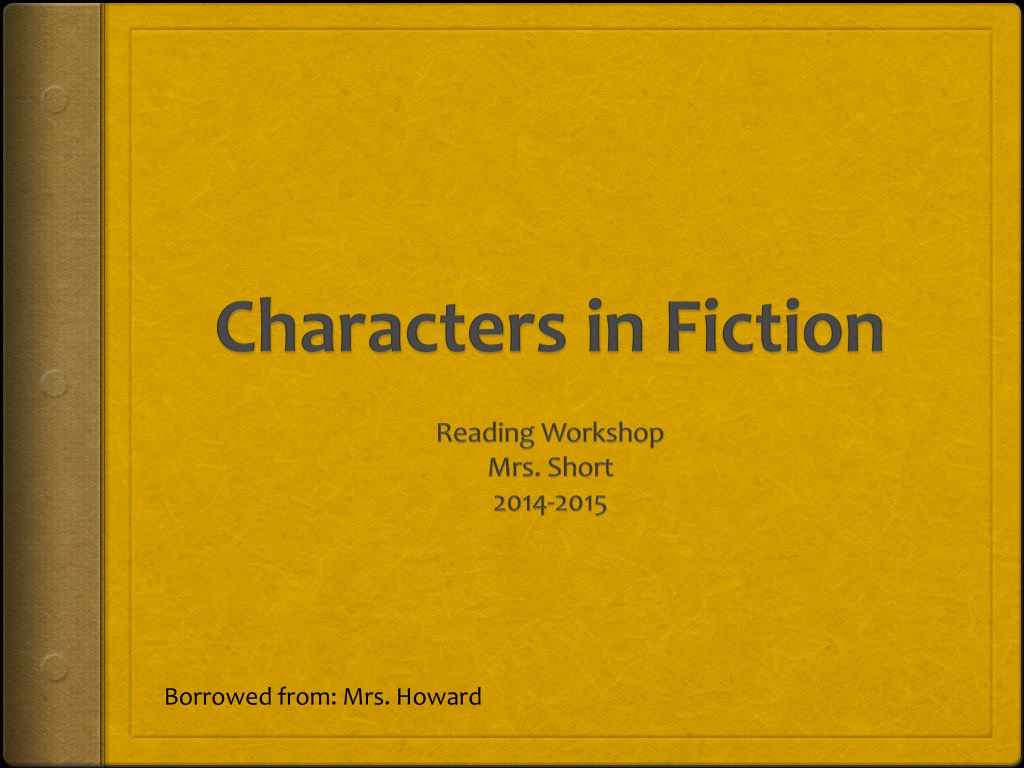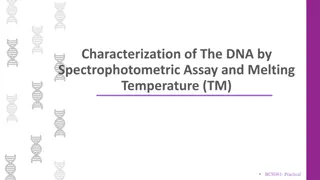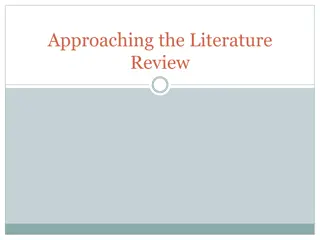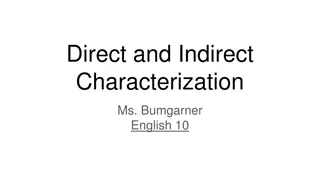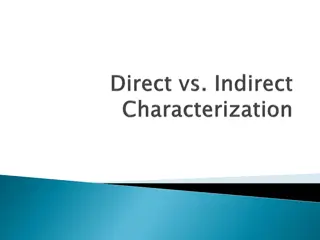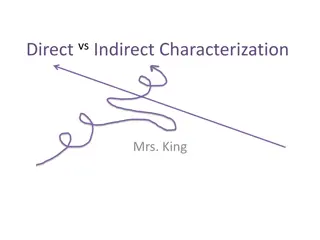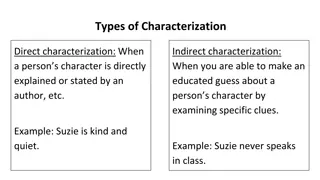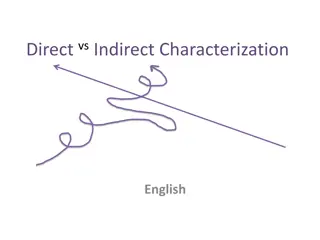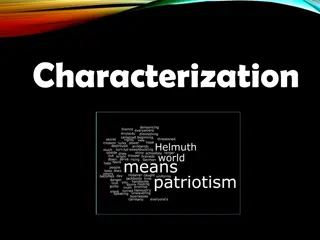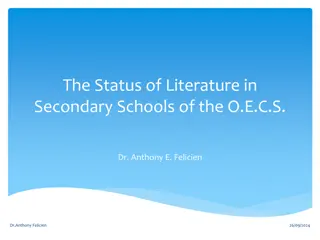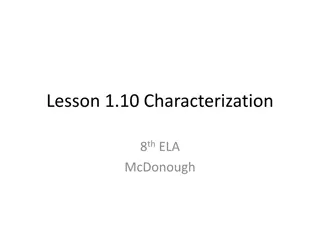Characterization in Literature
Characterization in literature allows us to empathize with the characters, understand their motivations, and experience their journeys vicariously. Major and minor characters play essential roles in developing the plot, while dynamic characters evolve over time, unlike static characters who remain consistent. Round characters exhibit complexity, while flat characters possess simplicity. Stock characters, like the femme fatale, are often stereotypical. By delving into different character types, authors create compelling narratives that resonate with readers.
Download Presentation

Please find below an Image/Link to download the presentation.
The content on the website is provided AS IS for your information and personal use only. It may not be sold, licensed, or shared on other websites without obtaining consent from the author.If you encounter any issues during the download, it is possible that the publisher has removed the file from their server.
You are allowed to download the files provided on this website for personal or commercial use, subject to the condition that they are used lawfully. All files are the property of their respective owners.
The content on the website is provided AS IS for your information and personal use only. It may not be sold, licensed, or shared on other websites without obtaining consent from the author.
E N D
Presentation Transcript
What is Characterization ? It allows us to empathize with the protagonist and secondary characters, and feel that what is happening to these people in the story is vicariously happening to us; and it also gives us a sense of verisimilitude, or semblance of living reality. An important part of characterization is dialogue, for it is both spoken and inward dialogue that afford us the opportunity to see into the characters hearts and examine their motivations. In the best of stories, it is actually characterization that moves the story along, because a compelling character in a difficult situation creates his or her own plot. Karen Bernardo, Characterization in Literature
Major or Central Characters Characters vital to the development and resolution of the conflict.
Minor Characters Serve to compliment the major characters and help move the plot events forward.
Dynamic Characters A character that changes over time, usually as a result of resolving a central conflict or facing a major crisis. Dynamic characters tend to be central characters Example: Aladdin he went from thieving street rat to dishonest prince to honest hero.
Static Characters A character who does not change over the course of the conflict and resolution. Example: Scar from The Lion King he is evil and self- serving in the beginning, and he keeps those traits until he dies.
Round Characters Characters with more than one side to them. They are complex, contradictory or conflicted. Example: Katniss Everdeen she is soft and gentle at home with her sister and mother, but is a savage killer in the arena.
Flat Characters Character with only one side to them. Notable for one personality trait or characteristic. Example: Bruce the shark in Finding Nemo his motivations are clear and simple: hunger!
Stock Characters Also called an archetype Characters who seem stereotypical or conventional due to repeated use Femme Fatale Mad scientist Geek with glasses Faithful sidekick Dumb jock Ditzy blonde Usually flat characters
Protagonist/Antagonist Protagonist: Main character Usually faced with some conflict May not be admirable, but commands involvement (and usually empathy) from the reader. Antagonist: Represents the opposition against which the protagonist must contend. Obstacle that the protagonist must overcome.
Anti-Hero A major character who lacks conventional nobility of mind. Anti-heroes are more likely to give into temptations and head down a dark path. They are evil, but they do not wish to do harm. They may have violent backgrounds or conflicting motivations, but we find ourselves rooting for them! Examples: Dexter Robin Hood Day from Legend Santana from Glee
Foil Any character (usually antagonist or important supporting character) whose personal qualities contrast with another character. (protagonist). The contrast illuminates the other character. Often the foil is a secondary character to the central character it illuminates. Examples: Darth Vader Evil (black) to Luke s good (white) Mike and Sulley in Monsters Monsters University Mike is knowledgeable and skilled in scare tactics and theory but lacks the physical appearance and instinct of a true scarer. Sulley is gifted at scaring but lacks the technical aspect.
Reading Workshop Task Think about the book you are reading. What types of characters can you identify?
